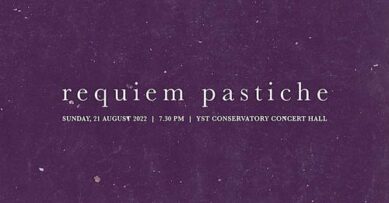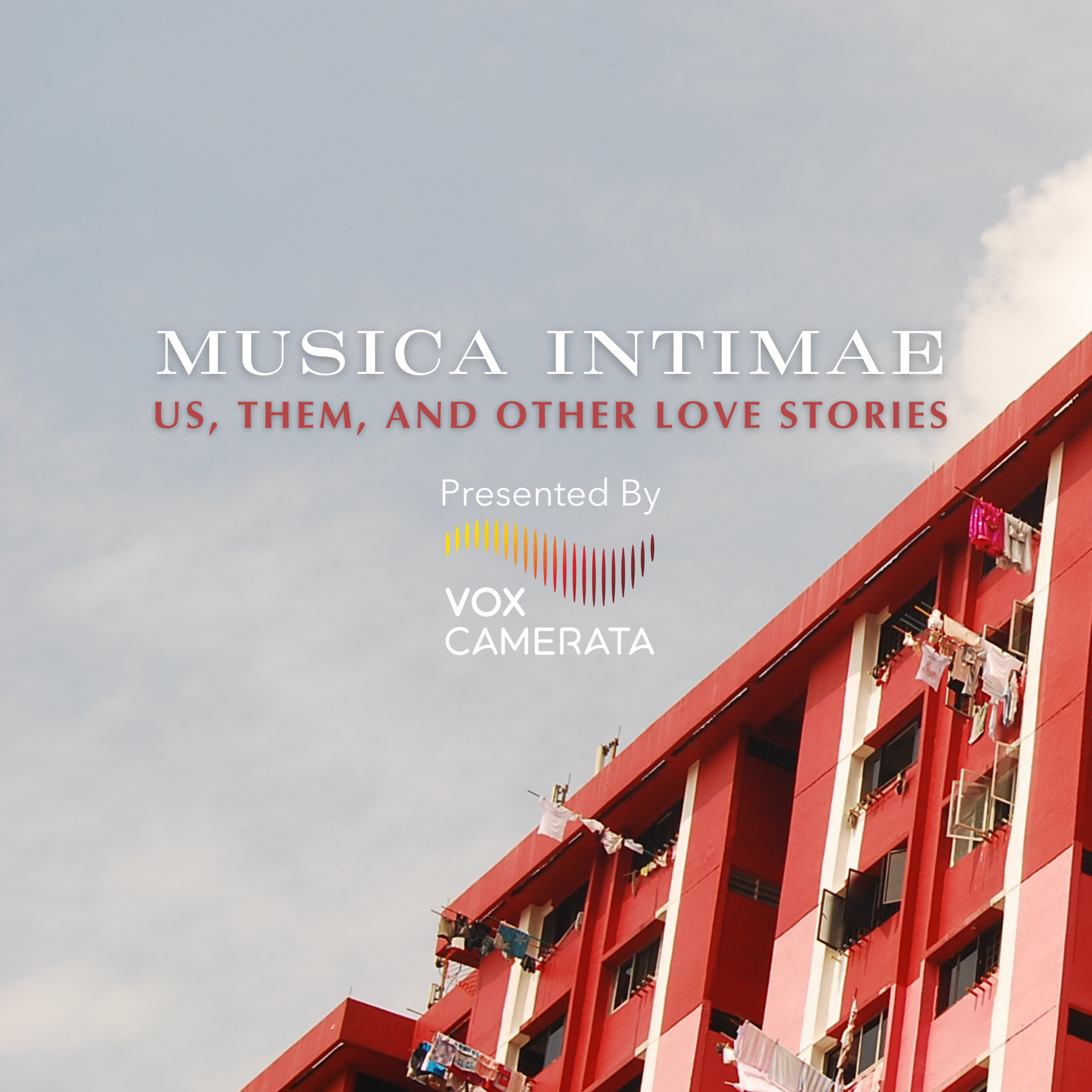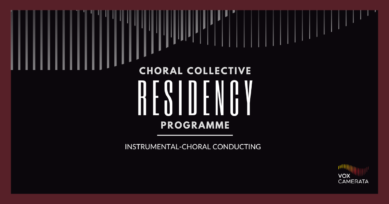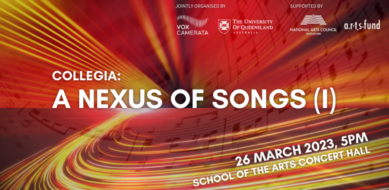A nascent collective of singers, Chroma, was formed by Ellissa Sayampanathan and Gerard Lim to explore Western classical vocal repertory to grow audiences and musicians. The ensemble comprises classically-trained singers and choral conductors.
In this debut concert, they presented the theme of grief, where the repertoire chosen was bound by poetry and texts that exhibit, or ruminate upon different perspectives of death, loss, and healing. This was helpfully narrated by the programme notes, providing the thought process and the framework underlying the construction of the programme. We encourage readers to appreciate the scholarship that went into the programme by checking the notes here.
The choice of programming around Requiem felt very apt, given the fresh memory of the pandemic which left its indelible mark on our collective psyche, along with the constant reminder of the international conflict that was currently happening amongst our brethren in Ukraine. The notion of Requiems commonly evoke connotations of death since the form is also known as the Missa pro defunctis (Mass for the dead) in the Latin rite as a votive mass dating back to the 2nd century and possessing extant musical settings from the 10th century. However, over time, the mass and consequent musical settings have also come to express the sense of suffering, loss, grief, and healing experienced by the living.
The programme mirrored the structure of Roman Catholic requiem mass, consisting of Introit, Dies Irae, Offertory, Sanctus, Benedictus, and Agnus Dei. Healy Willan’s austere How They So Softly Rest served as an introit that welcomed the audience as the opening number. The choir opened with a confident and robust vocal production befitting the profile of the choir. The sixteen-singer ensemble performed without a conductor. This let the musicianship of the individual singers shine, albeit at the expense of occasional misplacement of sibilant consonants. The largely homophonic work sets the tone right for the rest of the concert.
After the Introit, a short remark to the audience to keep their applause to the very end ensured that the flow of the programme was uninterrupted, a nod to the reverence towards a requiem mass.
Following that, the first of the Mass ordinaries was a short Kyrie from Felix Mendelssohn’s setting of Die deutsches Liturgie, MWV B57, opening the stage for later larger works in the programme.
In place of the Dies Irae typical of a requiem mass, what followed was Sir Charles Hubert Hastings Parry’s Songs of Farewell, his response to the atrocities and violent climate brought about by the First World War. This 30-minute work displayed the choir’s forte in full, where the various moods and text of the poems were performed with highly affecting musical treatment. Interspersed within the six movements were poems recited by various members of the ensemble which helped to set the mood of successive movements. There were some signs of fatigue at the end of this long segment, but the choir always managed to deliver convincing enunciation of English text and harmonic resolutions at the end of phrases were delivered with satisfying resonance.
In place of the Offertory text, two motets followed: Brahms’ O Bone Jesu, for upper voices, an expressive yet restrained contemplation upon salvation through Christ, and Mendelssohn’s Beati Mortui, for lower voices, which extols the blessed comfort and repose in the Lord at one’s death. The two motets allowed the listeners to enjoy the treble chorus and lower voices as contrasting colours. The treble chorus generally favoured a more reserved translucent tone whereas in the lower voices segment the bass section gave a round and warm tone. A touch more presence from the tenor section would have helped to balance the floating top melody in the Mendelssohn.
The rest of the mass ordinaries began with Sanctus and Benedictus from Josef Rheinberger’s Mass in E-flat, Op. 109. The choir displayed a nice contrast between the serene antiphonal phrases and the regal tutti cadence. However, the overtly enunciated German-Latin pronunciation sometimes distracted from the stillness and calmness of some of the softer phrases.
Concluding the programme was Brahms’ Agnus Dei from the Missa Canonica, where parts of the work also served as a draft for his Warum ist das licht gegeben dem Mühseligen, Op. 74. The choir managed to weave around the highly intricate counterpoint, complex harmony, and tricky interval leaps with commendable vocal dexterity.
Serving as an encore is a setting of Abide with Me by William H. Monk arranged by Gerard Lim with baritone solo by Matthew Brown.
As the proverbial curtain came to a close for the concert, one can’t help but feel impressed by the highly competent lineup of singers. The high level of musicianship of individual singers can be heard distinctly within the ensemble, with sensible blending among and within the section maintained throughout the performance. Delivering the poetry with minimalist staging without decor or an emcee, and very minimal stage movement helped deliver the right settings that were fully appropriate in service of the theme. With such high technical standards, there is also high hope for the musicians to also spend more time discovering their ensemble sound to finetune the alignment of timbre, section balance, and musical phrases to give the final sparkle that could have made the performance truly exceptional. One case in point was to agree on when to do a full-bodied vibrato for dramatic effect versus a straight tone for harmonic fidelity; the tendency seemed to let habit take over rather than to make informed musical decisions. A couple of music might also benefit from a change in standing arrangement to give more prominence to different voice parts because the current static arrangement seemed to favour a bass-heavy presentation.
An inside story from a friend revealed that the threat of the pandemic was ever present during the two-month rehearsal process where a couple of members had to take an absence from rehearsal and spend time recovering which caused the rehearsal process to be challenging indeed.
A glance at the concert hall revealed that the YST Conservatory Concert Hall was around 70% full. This was a promising start for an up-and-coming ensemble and perhaps was a testament to efficient marketing and outreach. We hope their future performances are similarly highly anticipated.
Chroma also performed at Voice of Singapore Festival on 7 September 2022 at CHIJMES Hall and Voices – A Festival of Song in December 2022 at Esplanade – Theatres on the Bay.
Credit: programme notes written by Ellissa Sayampanathan and Gerard Lim.
Review written by Aditya Santoso with valuable contributions from Samantha Wee and Dr. Shahril Salleh.



